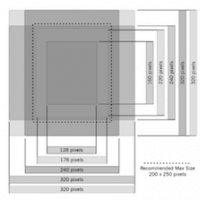Tag Archives: Device Detection
Mobile and Web: restating our assumptions
November 13, 2013, by Martin Clancy
Much like Max Cohen, the tortured mathematician looking for order in chaos in the classic movie Pi, we all find ourselves constantly reevaluating our assumptions and thinking on the issues at the intersection of mobile and web. Which is how it ought to be. In such a fast moving environment, sticking one's head in the sand isn’t really an option. By the time you raise your head and take a look around, chances are you will be looking at a completely different landscape... Read More
Open discussion with Mozilla on the use cases for UA strings
November 6, 2013, by ronan
Yesterday, [url=https://twitter.com/miketaylr]Mike Taylor[/url] from Mozilla kicked off a very interesting open discussion on the use cases for user agent (UA) strings on the modern web. The results of this document will ultimately end up on the [url=https://wiki.mozilla.org/UA/UseCases]Mozilla wiki[/url]... Read More
Anatomy of a mobile web experience: google.com
March 28, 2012, by ronan
In a recent blog post that I did here on mobiForge (Server-side device detection used by 82% of Alexa top 100 sites) some people expressed surprise that a 47 byte difference in the HTML payload delivered by Google to different devices constituted a significant level of server-side adaptation. On checking my results, it turned out that this minor 47 byte file size difference actually masks an entirely different HTML document served to... Read More
Server-side device detection used by 82% of Alexa top 100 sites
January 11, 2012, by ronan
About 82% of the Alexa 100 top sites use some form of server-side device detection to serve content on their main website entry point. As you descend from the top 10 to the top 25 and top 100 sites the percentage of sites using server-side detection falls from 100% to 96% to 82%. This is an interesting fact given the all of the recent discussion in the blogosphere of responsive design using client-side techniques such as media queries... Read More
Mobile web content adaptation techniques
November 1, 2011, by ronan
Introduction This article will help you pick from amongst the many techniques for building a mobile website. It doesn't describe how to do it, rather it instead tries to help you to pick the right approach. Before we begin it's worth clarifying exactly what the goal of the exercise is. Generally speaking, people who are looking to build a mobile site fall into two categories. They're either:... Read More










